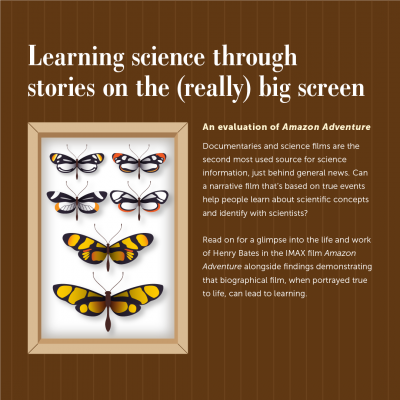
Inventing Tomorrow Receives the Peabody Award for Documentary Film
Los Angeles (June 10, 2020) - Inventing Tomorrow, the acclaimed documentary feature that premiered on the award-winning PBS series POV has been honored with the Peabody Award for Documentary Film. Selected from among 60 nominees that represent the most compelling and empowering stories released in broadcast and digital media during 2019, the film continues to inspire and engage both teachers and students with a national STEM education campaign funded by Howard Hughes Medical Institute’s Tangled Bank Studios.
"The Farthest" ranks 20th on the list of the 50 best Irish films ever made.
Oliver Sacks: His Own Life explores the life and work of the legendary neurologist and storyteller, as he shares intimate details of his battles with drug addiction, homophobia, and a medical establishment that accepted his work only decades after the fact.
You’ve heard the concerns. Kids are losing touch with nature. They don’t get enough outdoor time these days. And it’s not good for their development. But what if they could get the benefits of being out in nature and still bring their smartphones along? It sounds too good to be true. It’s actually an app called Seek, from an organization called iNaturalist.
The story of how life rebounded after the mass extinction of nonavian dinosaurs is told by fossils found in Colorado
This year, scientists gleaned new insight into the day the dinosaur-killing asteroid crashed into Earth 66 million years ago, and the first million years after the impact.
Oliver Sacks: His Own Life
On January 15th, 2015, a few weeks after completing his memoir, the writer and neurologist Oliver Sacks learned that the rare form of cancer for which he had been treated seven years earlier had returned, and that he had only a few months to live. One month later, he sat down with director, Ric Burns, for a series of marathon filmed interviews in his apartment in New York.
Burns explores Sacks’ life and work as the renowned thinker shares details of his battles with drug addiction, homophobia, and a medical establishment that accepted his work only decades after the fact.
